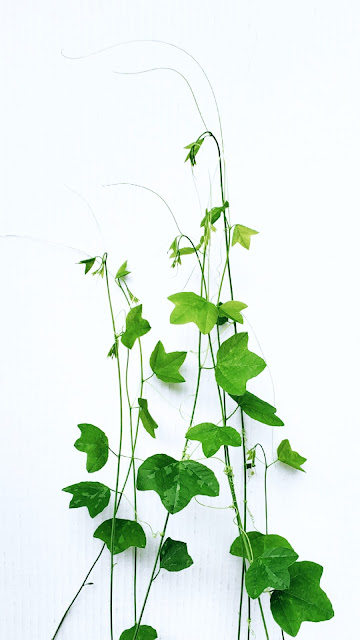Pellitory, Pellitory where are you?
Have you ever heard of Pellitory-of-the-wall?
This name is a little redundant as it turns out because Pellitory is the translative of Parietaria -- a latin word that was composed by etruscan and early greek to mean: "Of The Wall"!
This makes a lot of sense -- Parietaria is generally found against walls and other wall like structures that provide it a bit of shade and coolness.
 |
| Pennsylvania Pellitory sketch by @jenniferwester |
Found across the Americas as a native, Pennsylvania Pellitory is known for its cucumber scent and flavor (when raw), its smooth edged, lanceolate (think Lancelot sword 😉) shaped, slightly fuzzy to the touch leaves. And a peculiar ability to give some particularly allergy prone people to get 'the itchies'.
That being said, it's also said to have incredible fluid retention clearing abilities. And is known as 'Hierba del Rayo' in Mexican traditions where it would be made into a poultice and held to ones forehead with a cloth to calm nerves and clear a headache. (I've never tried this, but if someone has, please let me know if it worked!)
Most of the research I've found claims it to be helpful as a diuretic and in resolving kidney stone/urinary issues. But there are a number of citings, some of which claim it to be a great cure for an old cough or to ease a sore throat (as a gargle); to remediate rheumatisms as a poultice or salve; to reduce body temperature due to a fever.
Personally, I just appreciate this little spring arrival for its tasty leaves -- tastiest young when they are less developed, thus chew easiest. Wrapped with Wonderberries (American Black Nightshade, solanum americanum) in a cream cheese sandwich or fresh in a bowl with a little balsamic vinegar and olive oil, Pellitory makes for a beautiful cucumber flavored green while also being high in calcium, sodium, potassium, and magnesium according to Eat the Weeds.
Some culinary books that specialize in greens recommend cooking with Pellitory, such as this recipe adapted from Piante Selvatiche:
7 oz. Spagetti (dry)
3.5 oz. Pennsylvania Pellitory
2 oz. Basic Bechamel Sauce (milk, flour, & butter)
+ salt & chili to taste
Cook the pasta al-dente while steaming the pellitory.
Fold in sauce, pellitory, pasta and add salt & chili to taste.
Serve!
However, vloggers I've seen say that the pellitory looses its own flavor when cooked and becomes a great pot herb for that quality (it takes on the seasoning of everything else).
And apparently Pennsylvania Pellitory's close cousin, Parietaria judaica L., was used as a glass cleaning material in the Middle Ages. Who knew?
According to a few plant sites, Pellitory is also a host plant for the Red Admiral Butterly.
In looking for artistic uses for Pellitory, I failed to find any ready-made citing of it being used in dye or as a fiber. If I make any discoveries, I'll update this page to reflect them.
Finally, it seems Pellitory-of-the-wall has a few literary appearances to note that I will leave you with here:
Drugger. My head did so ache –
Face. And he was fain to be brought home,
The doctor told me: and then a good old woman –
Drugger. Yes, faith, she dwells in Sea-coal-lane, – did cure me,
With sodden ale, and pellitory of the wall;
Cost me but two-pence.
~ Act III of Ben Jonson’s The Alchemist



Comments
Post a Comment